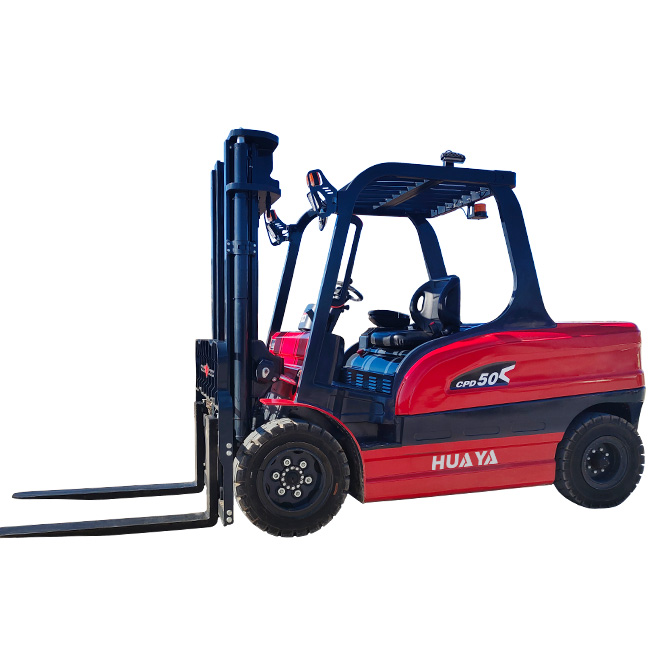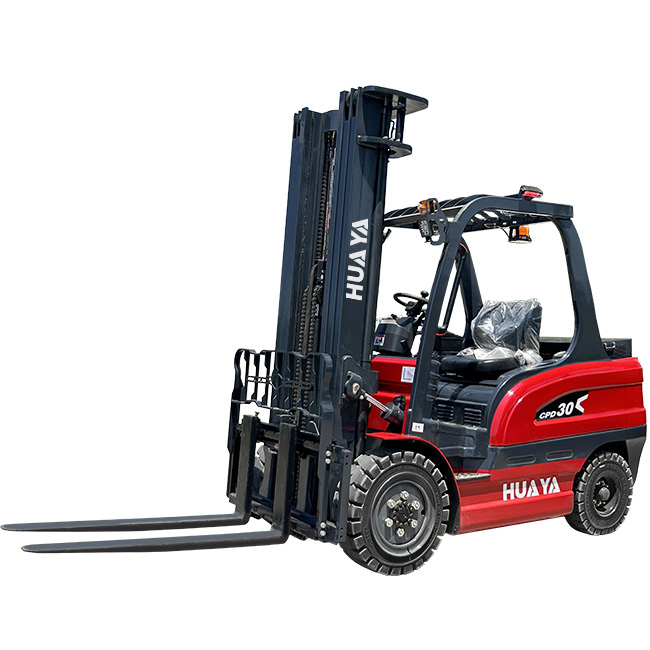What Are the Safety Rules for a Reach Truck?
22 Aug 2025
Operating a reach truck requires strict adherence to safety standards to ensure the well-being of operators, co-workers, and the protection of inventory. A reach truck is widely used in warehouses and distribution centers due to its ability to maneuver in narrow aisles and lift loads to significant heights. However, without proper safety protocols, the risk of accidents increases dramatically. Below, we outline the most essential safety rules for reach truck operations, along with detailed insights into best practices for workplace safety.
The Basics of Reach Truck Safety
Before stepping into the operator’s seat, it is critical to understand that reach trucks differ from standard forklifts in terms of design, stability, and handling. Their slim frames and extended masts make them excellent for vertical lifting but more prone to tipping if mishandled.
Safety basics include:
Always ensure that the reach truck is in good working condition before use.
Wearing proper personal protective equipment (PPE), such as safety shoes, high-visibility vests, and hard hats.
Receiving adequate training and certification before operating a reach truck.
Pre-Operation Safety Checks
Conducting a thorough inspection before each shift is a non-negotiable rule for reach truck safety. Operators must check:
Brakes and steering responsiveness to avoid loss of control.
Hydraulic systems for leaks or irregular pressure.
Forks and mast for cracks, bends, or any sign of wear.
Battery or fuel levels, ensuring connections are secure and functioning.
Warning signals, lights, and horns to confirm they are operational.
Documenting these checks ensures accountability and reduces workplace hazards.
Safe Driving Practices for Reach Trucks
Reach trucks are designed for narrow aisles and elevated lifting, which makes careful driving essential. Operators should always follow these driving safety rules:
Maintain a controlled speed – Sudden acceleration or sharp turns can destabilize the truck.
Keep the load low while moving – Carrying loads too high increases the risk of tipping.
Observe clear visibility – Never operate with obstructed vision; when necessary, drive in reverse for better visibility.
Use designated travel paths – Avoid shortcuts that may expose the truck to uneven ground or collisions.
Avoid abrupt braking – Smooth braking reduces the risk of load displacement.
Load Handling and Stability Rules
A reach truck’s efficiency lies in its ability to lift loads vertically, but this also increases the risk of instability. To maintain balance and safety:
Never exceed the rated load capacity of the truck.
Center the load on the forks to prevent tilting.
Tilt the forks slightly back when transporting loads to keep them stable.
Avoid double-stacking unstable pallets, as they may collapse under pressure.
Do not lift or lower loads while in motion – always come to a complete stop.
These rules ensure both operator safety and product protection.
Awareness of Surroundings in Narrow Aisles
Reach trucks are typically used in tight warehouse environments, making spatial awareness critical. Operators must:
Watch for pedestrians and co-workers when turning corners or entering aisles.
Use horns and warning signals when approaching blind spots.
Keep a safe distance from racking systems to avoid collisions.
Follow aisle width requirements to prevent mast or load strikes.
Awareness reduces the risk of accidents in busy, space-constrained operations.
Proper Parking and Shutdown Procedures
Improperly parked reach trucks can cause workplace hazards. At the end of each shift or pause in operation, operators should:
Lower forks completely to the ground to avoid tripping hazards.
Turn off the power supply and remove the key.
Park in designated safe areas away from aisles or emergency exits.
Engage the parking brake to prevent unintentional movement.
Following these steps ensures the equipment remains safe and ready for the next operator.
Training and Operator Certification Requirements
One of the most critical safety rules is ensuring only certified operators handle reach trucks. Comprehensive training includes:
Classroom instruction on safety regulations and operational theory.
Practical hands-on training under supervision.
Evaluation and certification according to OSHA or local regulations.
Regular refresher courses and performance evaluations help maintain high safety standards.
Emergency Situations and Safety Response
Accidents can still occur despite best practices. Operators must know how to respond:
In case of tipping, operators should remain seated, hold the steering wheel tightly, and brace with feet—not jump out.
During collisions or spills, immediately stop the truck and report the incident.
Battery leaks or fires require immediate evacuation of the area and use of proper extinguishers.
Preparedness minimizes injuries and damage in emergencies.
Workplace Policies and Collaborative Safety
Safety is not the responsibility of the operator alone. Employers must:
Enforce clear warehouse traffic rules.
Provide regular maintenance of reach trucks.
Implement safety signage and floor markings in operational areas.
Encourage reporting of unsafe conditions without fear of penalty.
Collaboration between management and operators ensures a culture of safety.
Operating a reach truck requires more than skill—it requires strict adherence to safety rules that protect people, equipment, and inventory. From pre-operation inspections to load handling, workplace awareness, and emergency response, every step contributes to a safer environment. By prioritizing training, discipline, and situational awareness, companies can significantly reduce accidents and improve warehouse efficiency.




